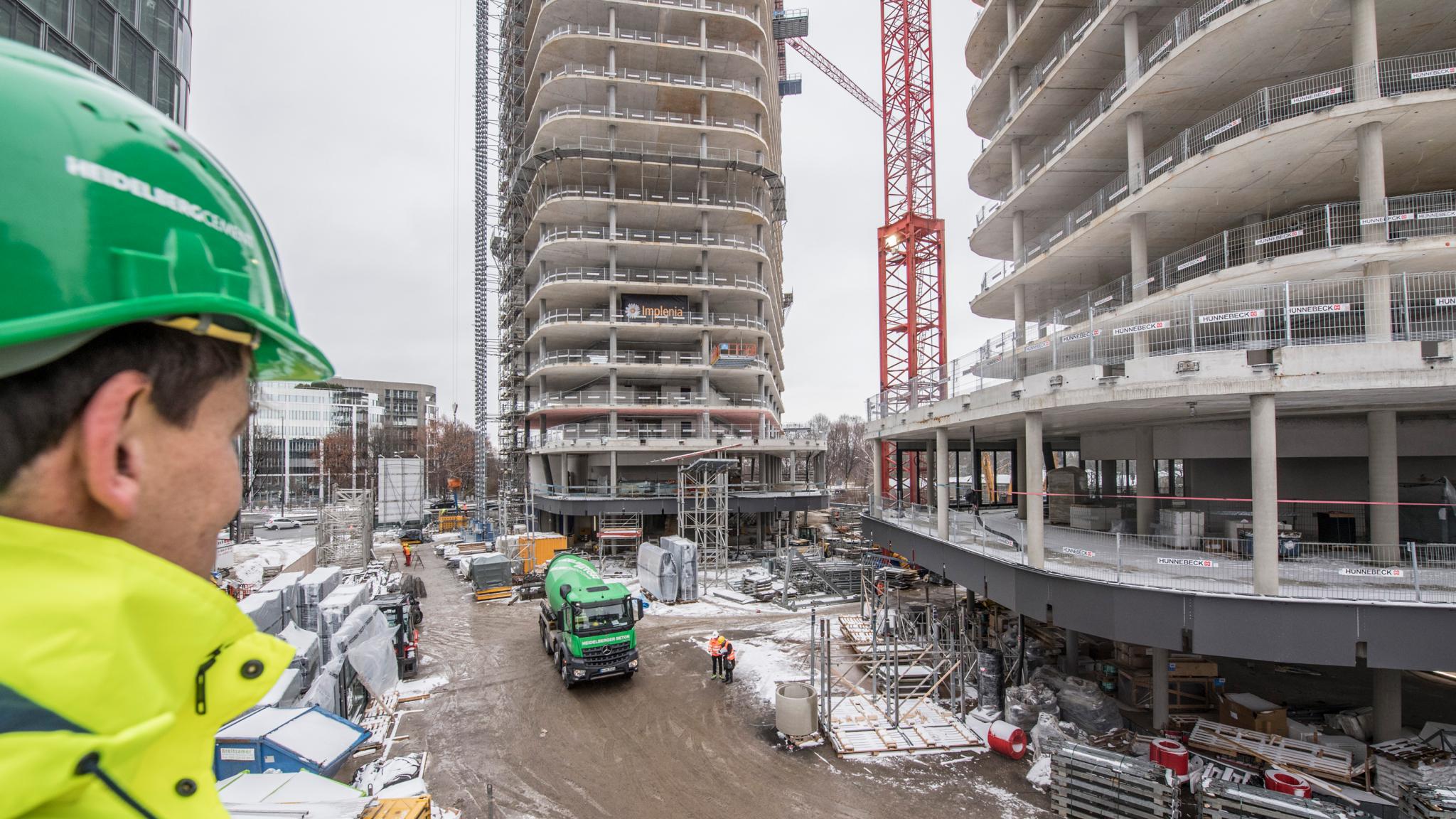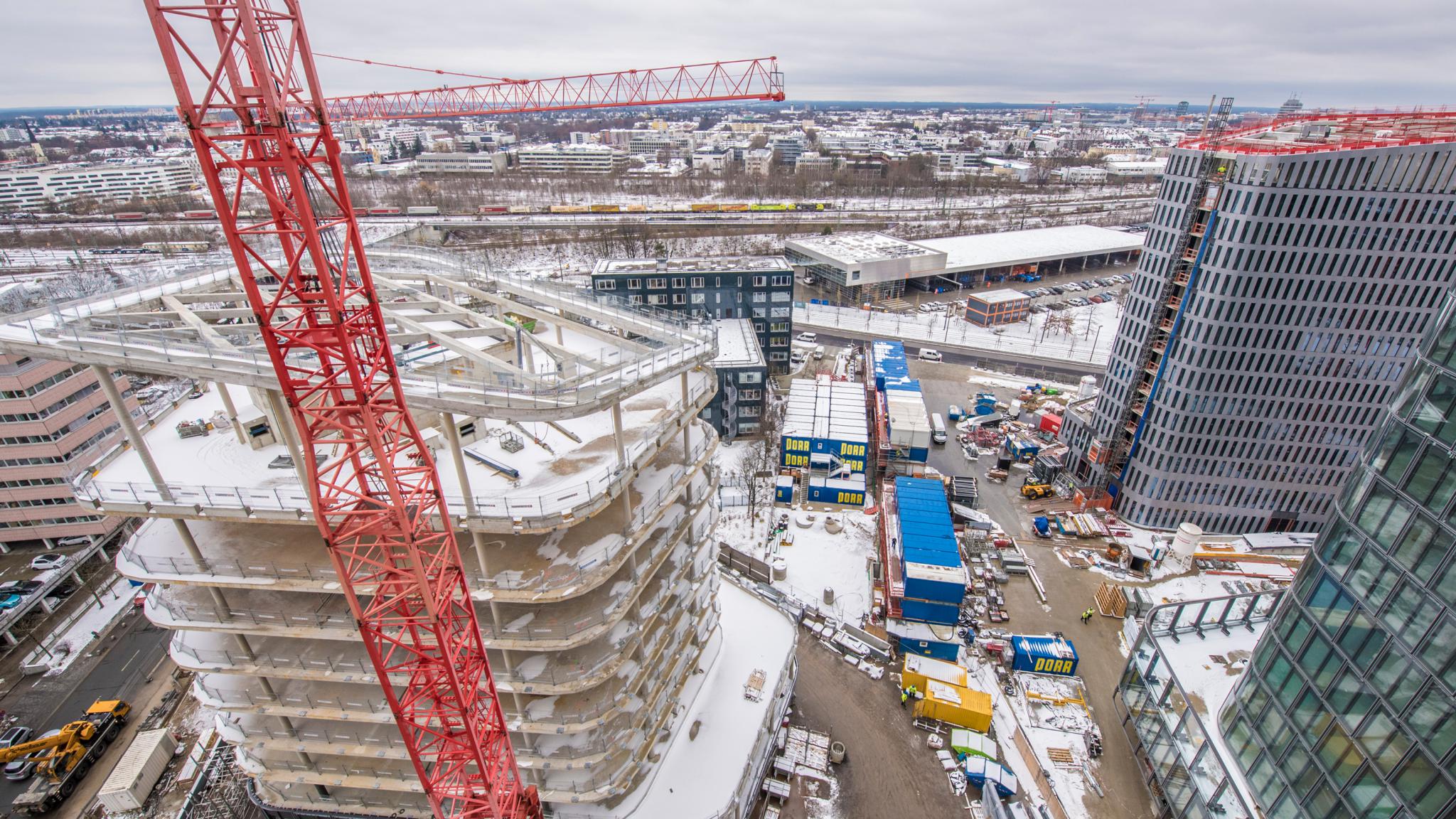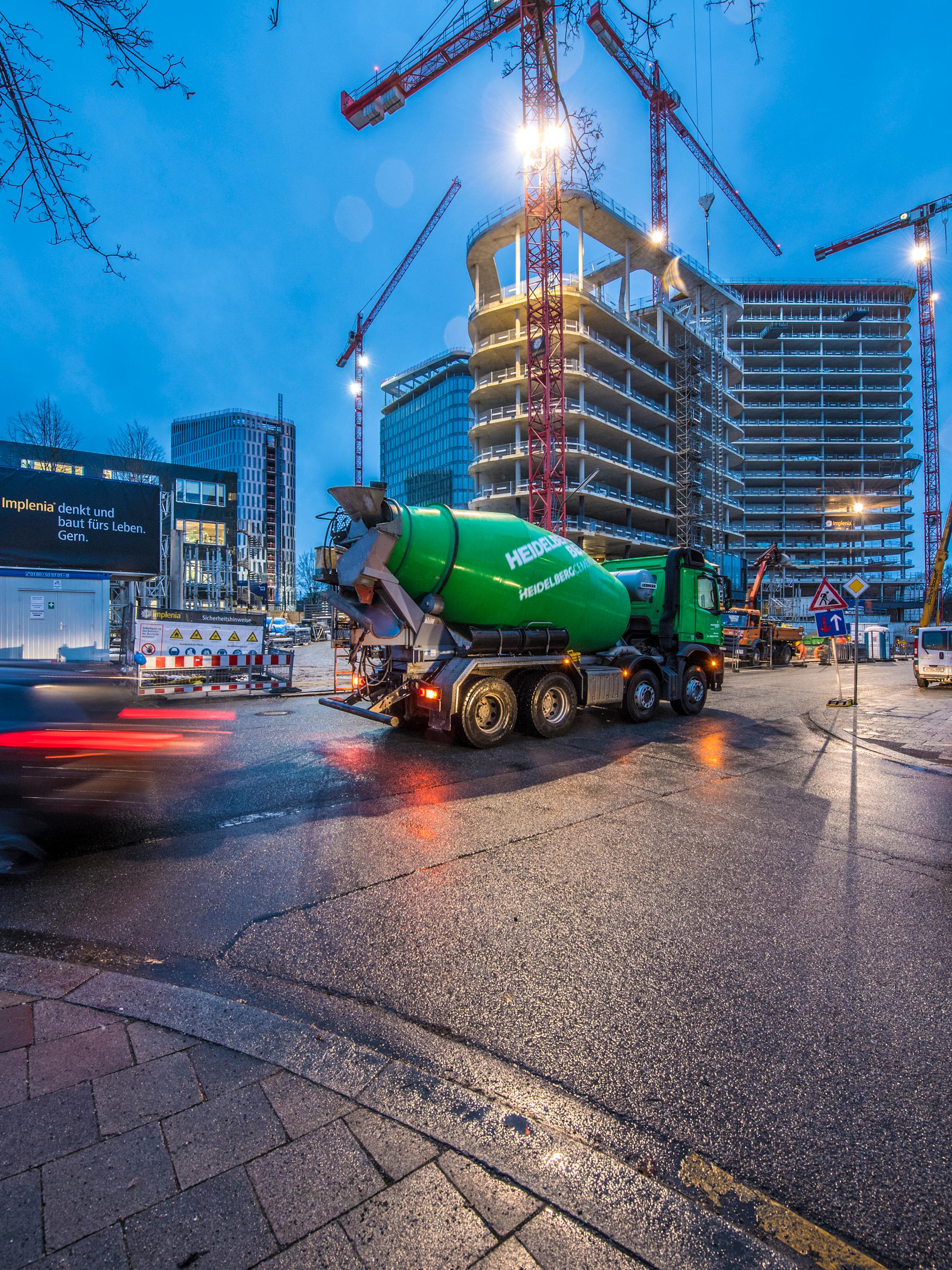Bavaria Towers
An ensemble of four towers designed by the Spanish architects Nieto Sobejano Arquitectos are set to make their mark on the east of the Bavarian state capital. The Bavaria Towers are one of the few high-rise developments in the city in recent years and a perfectly positioned addition to the Munich skyline.
Germany has 78 buildings over 100 metres in height, while the European total is 753. In contrast, there are over 100 buildings in excess of 300 metres in New York alone. German cities have a problem with high structures, which could have a negative impact on historical cityscapes. The City of Munich, for example, follows the Münchner Linie guidelines, developed from two studies of high-rise buildings from 1977 and 1995. Following a referendum in 2004, the city set a 100-metre limit which must not be exceeded. The authorities wish to ensure that the view of famous landmarks in the old city, the main sightlines, and open spaces that merit protection are not adversely affected.
Tower blocks are regarded as a type of building that should not become the norm. The aim is to preserve the cityscape and its inner structure, expressed in the “Munich mix”, through a combination of tradition and contemporary building. But the debate remains a political issue with varying opinions. In Munich, the discussion has reopened as to whether building upwards could in fact be a means of densification.
Since the foundation stone was laid for Bavaria Towers, a whole high-rise ensemble has begun to take shape in the Bavarian capital. With heights ranging from 46 to 84 metres, the three office blocks and one hotel building create a representative and striking urban design statement in their location. The €380 million project in Bogenhausen is the first substantial tower block project to have been approved here for many years. Its success was due to the project meeting important criteria that Munich had made a condition for high-rise construction. These criteria include the fitting effect of a project from a distance and its impact close up within the district. Consideration must also be given to the impact it makes on the view from a variety of high locations and viewpoints, on various sightlines, and from key routes into the city.
Due to the significance of the location in terms of urban design, the project initiator and project developer – along with the investment partner, Zurich Gruppe, and the Von der Heyden Group – carried out an area development planning process over a number of years in cooperation with the city administration. They also ran an architectural competition in which the Nieto Sobejano Arquitectos office emerged as the winner. The internationally acclaimed architects designed the four high towers to each have a pentagonal ground plan. While their comparatively modest height means they are certainly no skyscrapers, their appearance nevertheless sets a new standard in the east of the city. Describing the Bavaria Towers at the opening of an exhibition at the Aedes Architecture Forum in Berlin, the architect Sobejano stated that, though he was only responsible for developing the shape and design of the buildings, he is still proud of the completed ensemble at this location.
The three office blocks and one hotel building create a distinctive urban design statement
The construction lift takes you up to the fourteenth floor. Here, in the shell of one of the towers, which comprises 20 floors including the service floor in the roof, a spectacular view of the ensemble opens up and extends far over the city in all directions. Simon Kaiser, Junior Project Manager from Implenia, a construction group with 130 years of experience, has been involved since 2016. He explains that the four blocks are being developed in what is known as a partnership division. Construction engineer Kaiser is working on the two buildings D and E along with another 11 project managers, 5 foremen and around 100 to 200 workers, while the company PORR is responsible for buildings B and C. A planned component A is still being developed: the land belongs to the city. The basic fit-out is underway in Implenia’s office blocks: the project will be executed ready for occupancy after the contracted construction phase. The choice of interior design will be left to the occupants of the different offices. There are plans for a day-care centre on the ground floor, which will be available to the children of future employees.
From high up, safely behind the security railing, there is a good view of the impressive concrete structure of the nine-storey building opposite. “The slanted roofs are the architect’s choice,” says a pleased Simon Kaiser, referring to the successful concreting of the complex roof design. The concrete structure lies like a tilted polygonal crown on top of the concrete supports and is connected by concrete struts which form a kind of grid and help to reinforce the roof structure. To realise the design, the concrete specialists used Chronocrete, a quick-setting concrete from Heidelberger Beton which sets very quickly and has a high early strength. The surrounding concrete ring was designed to carry the suspended access equipment for the cradles used for cleaning the facade. Finally, the gently rounded buildings will be clad with a glazed post and beam structure on the ground floor and suspended curtain walls on the floors above.
Since building started, this tower’s reinforced concrete skeleton has grown upwards on its polygonal ground plan above the solid foundation slab and three lower storeys with over 20 concrete supports per floor. This has produced open floor plans for office areas which can be fitted out as desired. Stabilising cores for lifts and sanitary facilities are only located in the interior. As each floor covers 1,000 square metres, the reinforced concrete ceilings were concreted in two sections for each storey.
The 3-metre-high supports carrying the ceilings have to provide huge concrete compressive strengths. A high-strength C80/95 concrete with particle size 8 from Heidelberger Beton from the nearby Zamilastraße delivery works was used, and an even higher density and strength were achieved by adding microsilica. The concrete was transported by crane and in buckets to the various installation sites. Although there were no additional requirements for the standard of the exposed concrete, the support surfaces are very smooth. “A pity,” declares Simon Kaiser, “that the architects don’t want to leave them as exposed concrete supports.”

Bavaria Towers Munich, Germany.
HeidelbergCement / Steffen Fuchs

Bavaria Towers Munich, Germany.
HeidelbergCement / Steffen Fuchs

Bavaria Towers Munich, Germany.
HeidelbergCement / Steffen Fuchs

Bavaria Towers Munich, Germany.
HeidelbergCement / Steffen Fuchs

Bavaria Towers Munich, Germany.
HeidelbergCement / Steffen Fuchs

Bavaria Towers Munich, Germany.
HeidelbergCement / Steffen Fuchs

Bavaria Towers Munich, Germany.
HeidelbergCement / Steffen Fuchs

Bavaria Towers Munich, Germany.
HeidelbergCement / Steffen Fuchs

